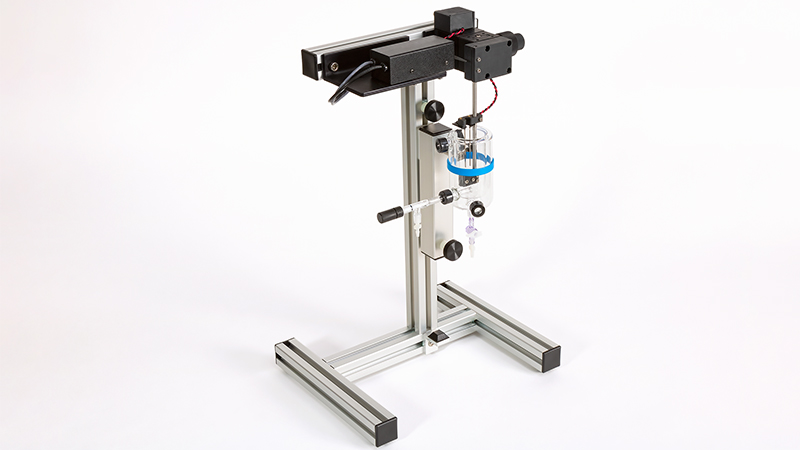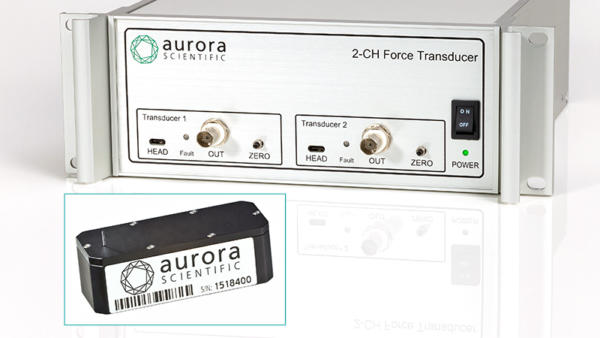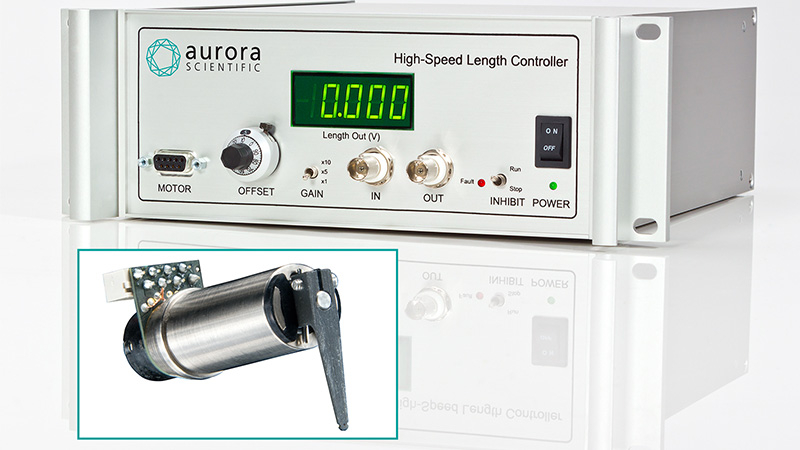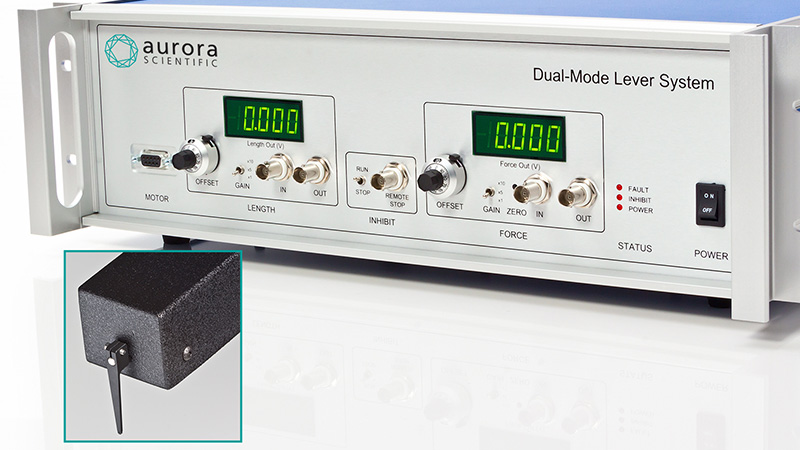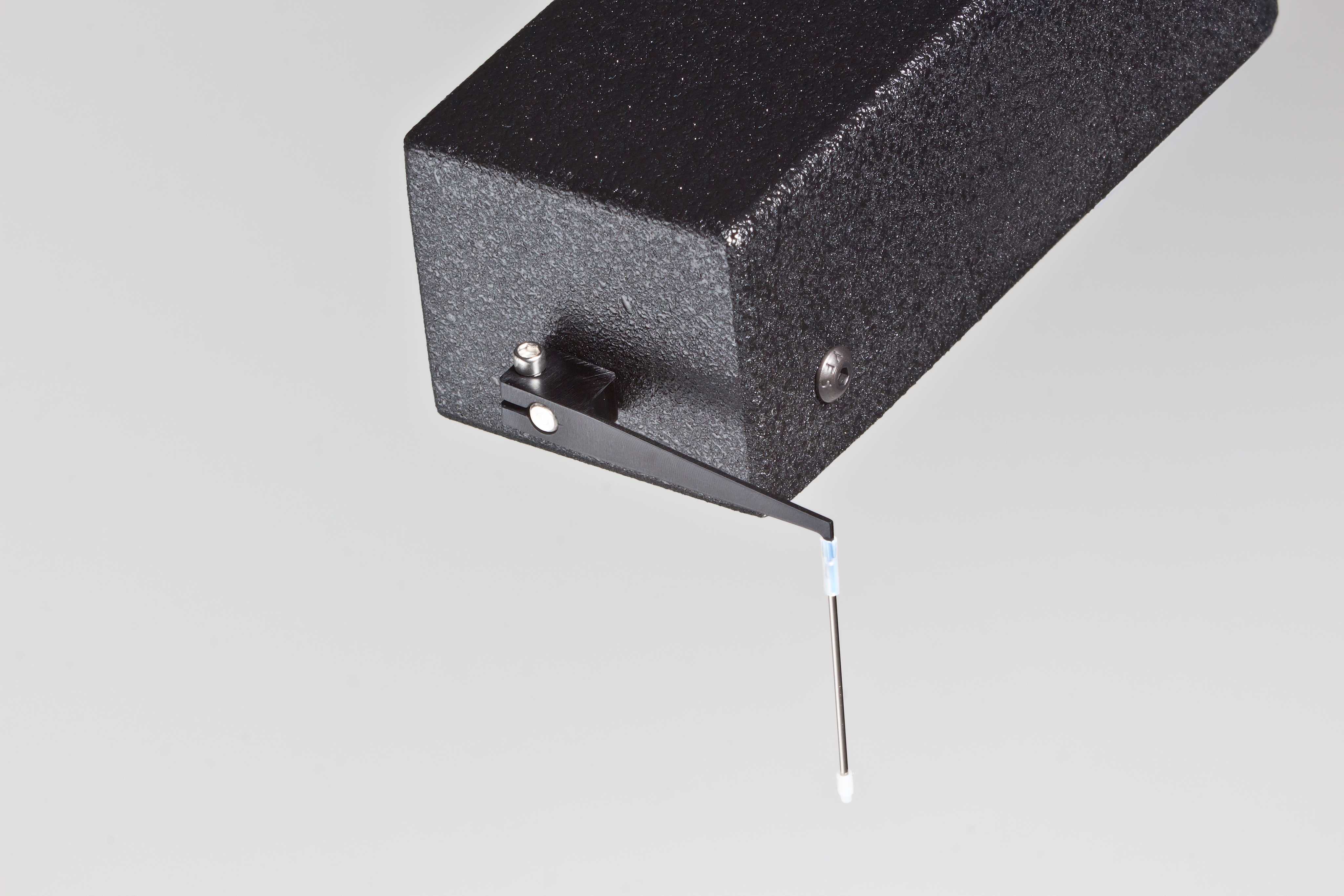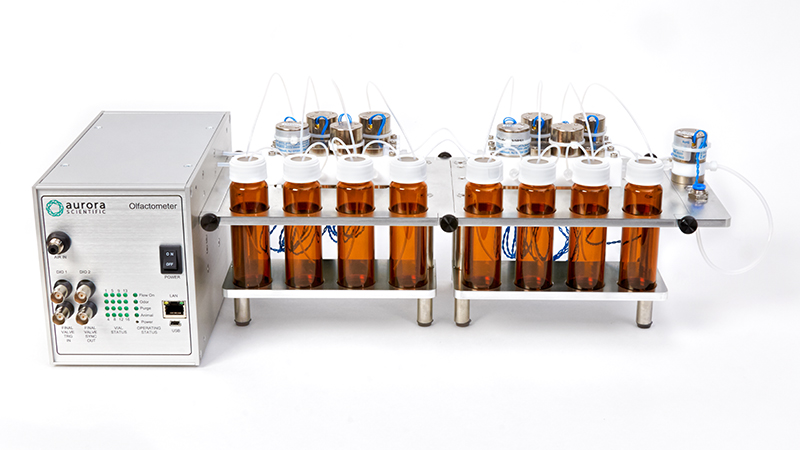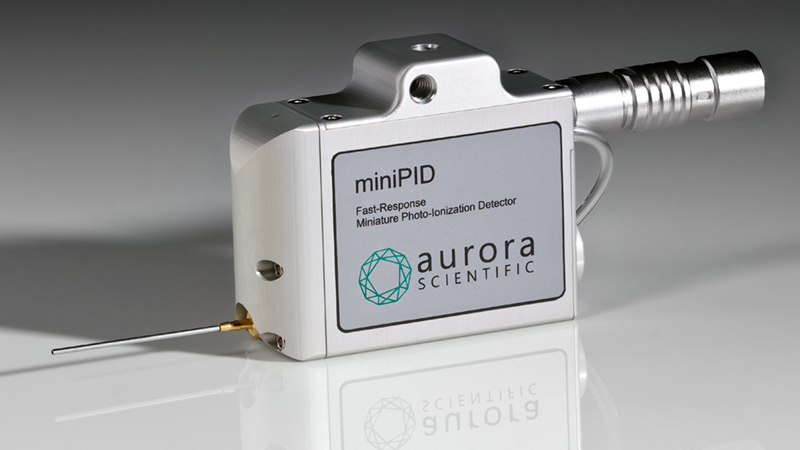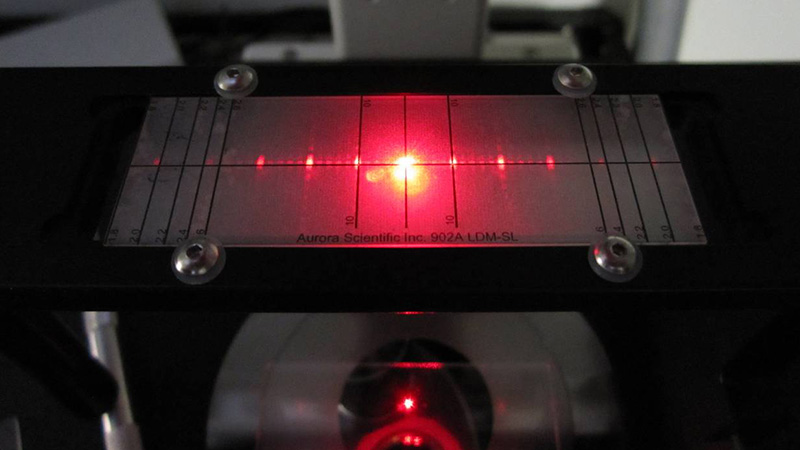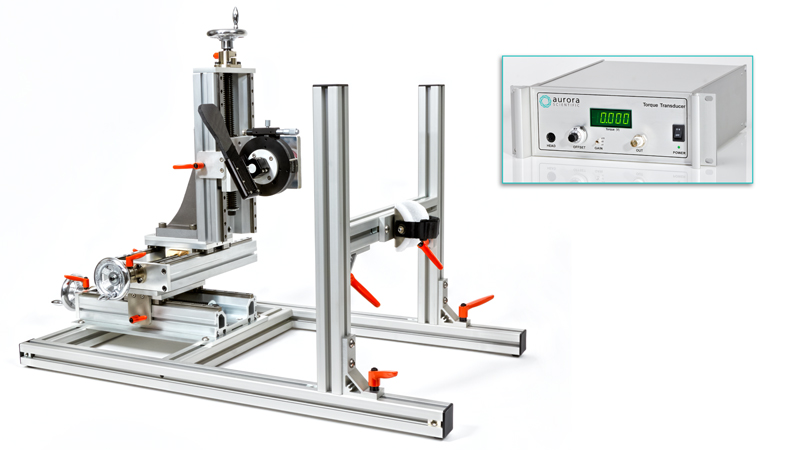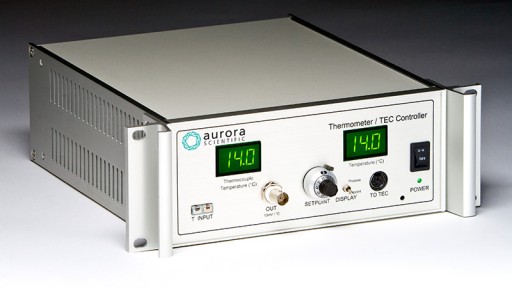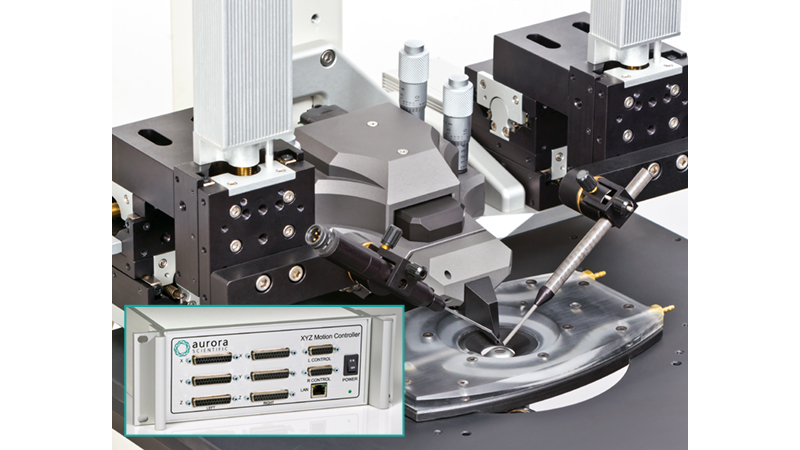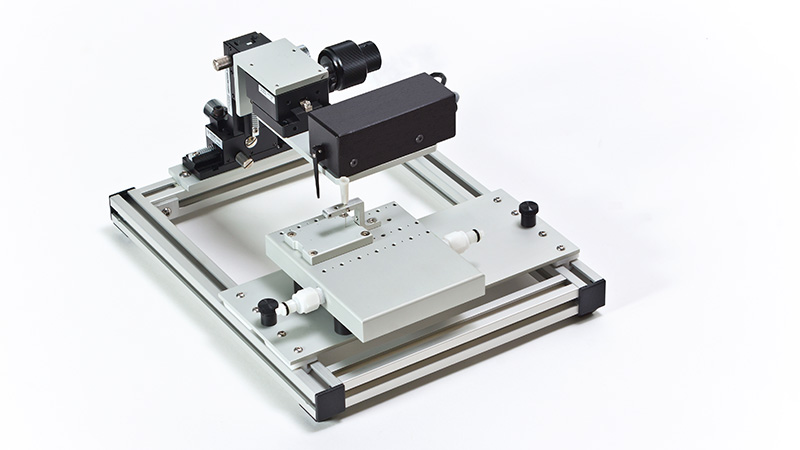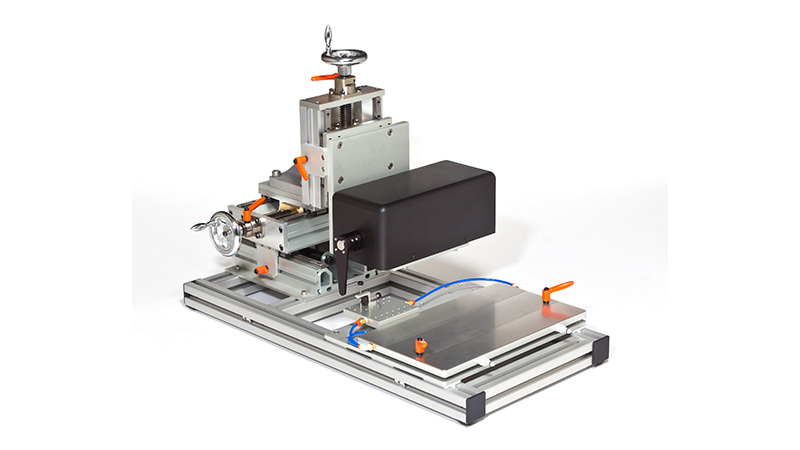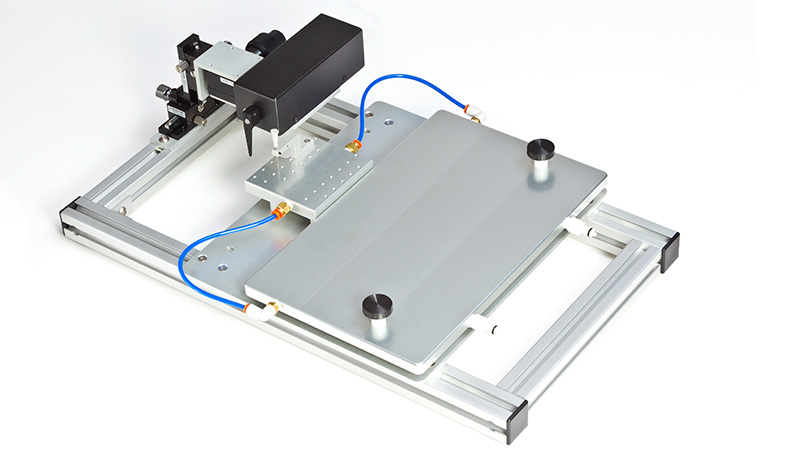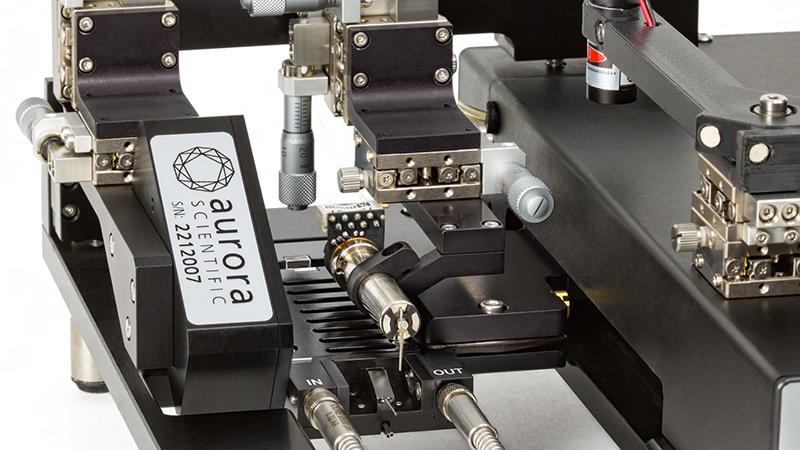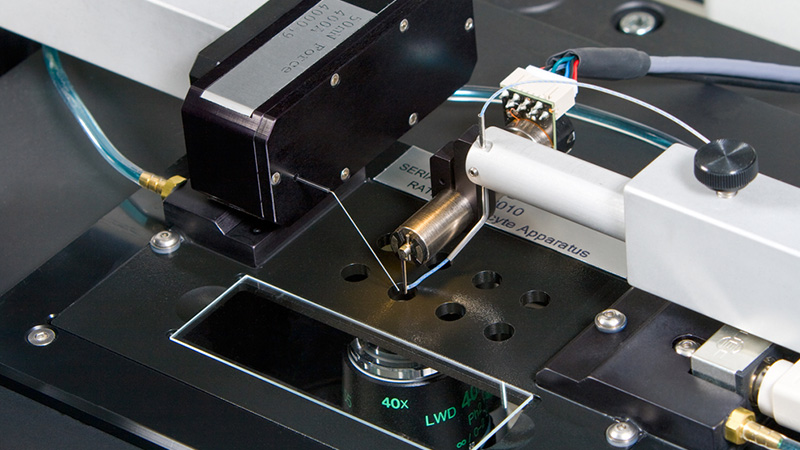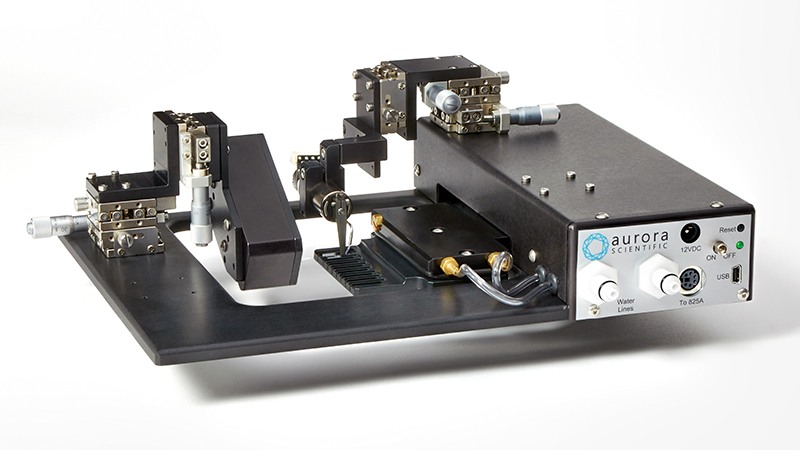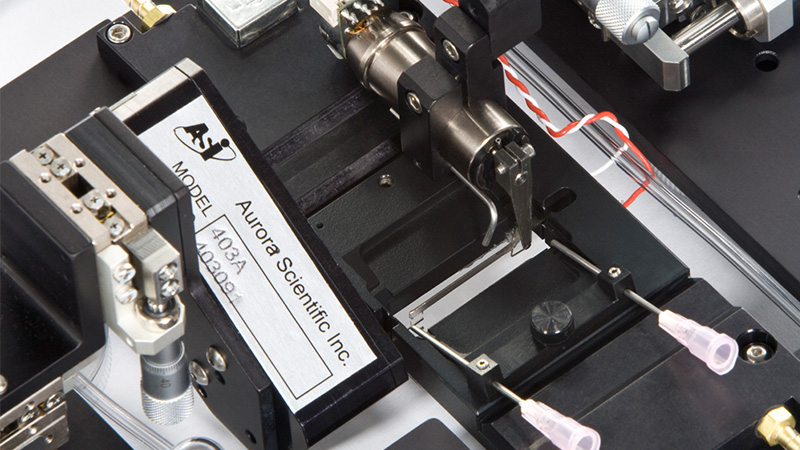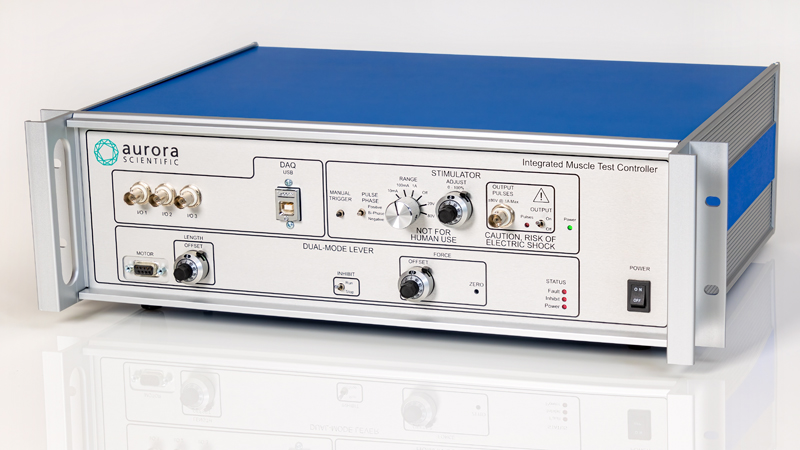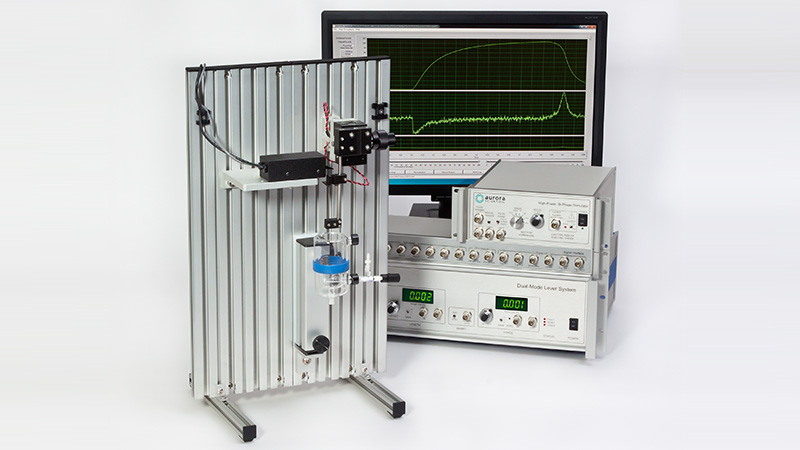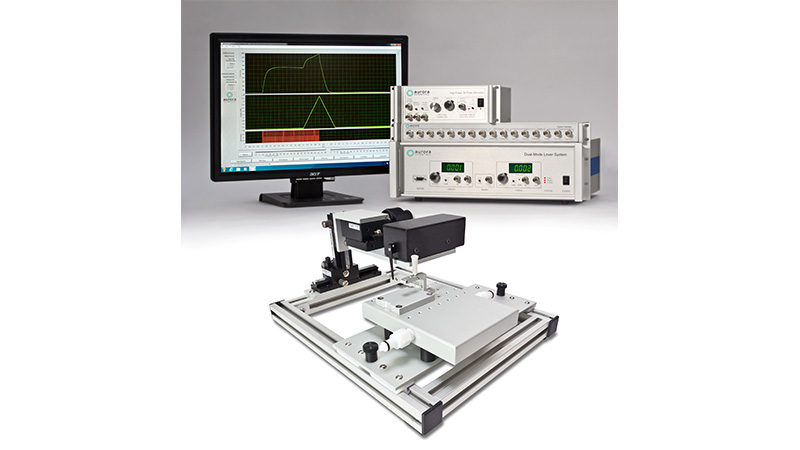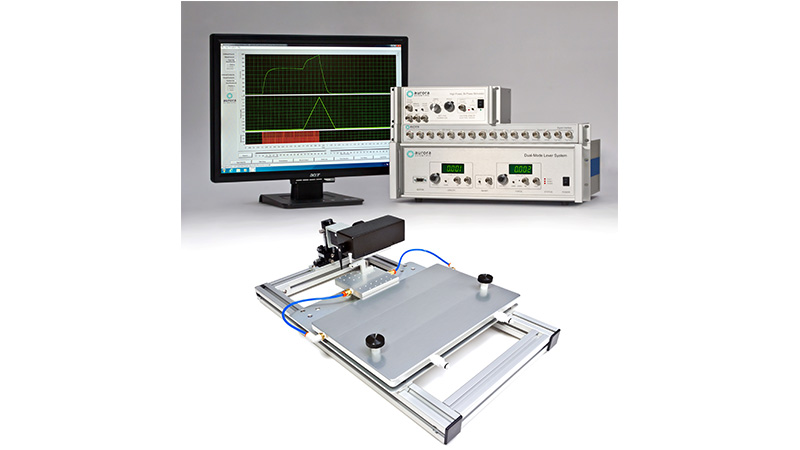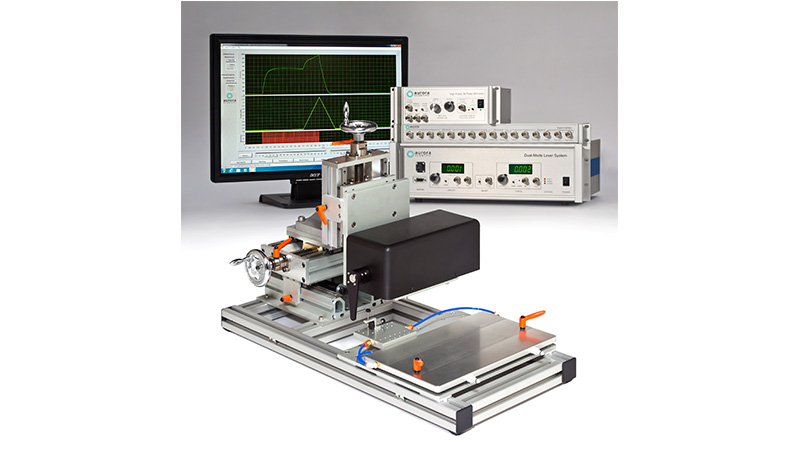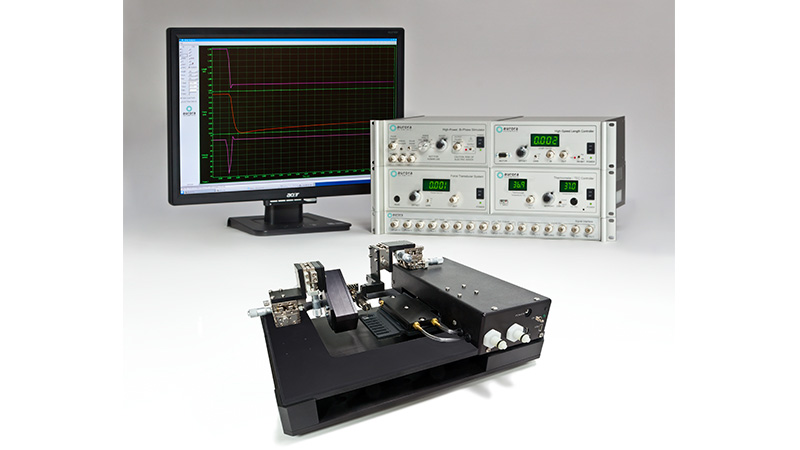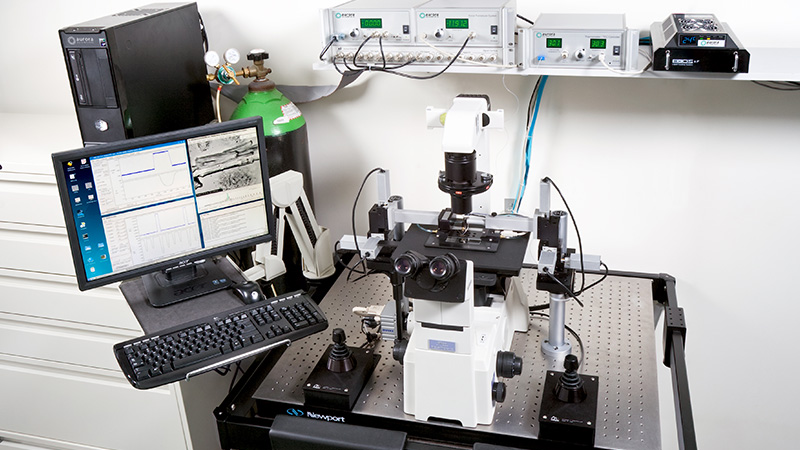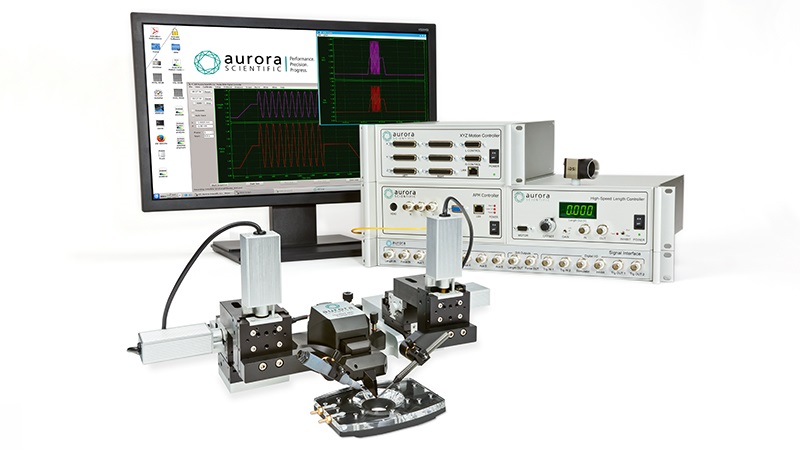Aurora 数字PID色散传感器(100A)
该传感器将快速响应,高灵敏度和微处理器控制结合在一个易于使用的软件包中。它具有50Hz的频率响应和50ppb(十亿分之一)的空气中丙烯气体的检测限。作为独立的,它只需要一个12伏的电源电池和一个用于控制和数据收集的通信电缆。内置微处理器允许通过通信接口远程控制传感器的所有功能(开/关,增益,零和数据传输)。20位电荷数字化模数转换器可提供传感器输出的精确转换。
![]()
digitalPID(数字光电离检测器)传感器用于记录分散气体通过传感器位置时的浓度波动。传感器可以组合形成一个探测器网格,非常适合大型户外测试,要求传感器及时同步并从单个位置进行控制。数字PID传感器已被用于许多室外现场试验,包括一项使用100个数字PID传感器收集羽流分散数据的试验。
该传感器将快速响应,高灵敏度和微处理器控制结合在一个易于使用的软件包中。它具有50Hz的频率响应和50ppb(十亿分之一)的空气中丙烯气体的检测限。作为独立的,它只需要一个12伏的电源电池和一个用于控制和数据收集的通信电缆。内置微处理器允许通过通信接口远程控制传感器的所有功能(开/关,增益,零和数据传输)。20位电荷数字化模数转换器可提供传感器输出的精确转换。
该软件提供控制和检索多达16个传感器数据所需的功能。在数据记录正在进行的同时,这些数据可以实时显示在计算机屏幕上。该软件在Linux操作系统的实时版本下运行,并预先安装在PC上。
digitalPID随传感器,传感器安装支架和RS-485通信/电源电缆一起交付。Aurora Scientific提供可选的RS-232通信/电源电缆(如果需要)。
可用于数字PID传感器的辅助设备包括:预先安装在运行实时Linux的PC上的DPID控制和校准软件,以及手动或自动校准器。
对于典型的室外试验,用户必须提供用于安装传感器的固定或移动式桅杆或三脚架,用于电源的12 VDC电池,用于传感器控制和数据采集的DPID PC以及带有气体供应的示踪气体分配器(通常丙烯,但许多其他物质可以检测到)。传感器用于记录分散气体通过传感器位置时的浓度波动。
![]()
传感器
● 快速响应–50 Hz
● 低检测限–40 ppb(空气中的丙烯)
● 高信噪比
● 内置20位模数转换器
● 内置RS-232和RS-485接口控制的微处理器
● 利用射频激发紫外灯的光电离检测器
● 稳定的
控制软件
● 控制和记录多达16个传感器的数据
● 输入数据的实时图形显示
● 菜单驱动,易于使用
● DPID程序在Linux实时操作系统下运行
● 内置RS-232和RS-485接口控制的微处理器
● 利用射频激发紫外灯的光电离检测器
● 稳定的
可选支持设备
● 校准套件
● 数据采集计算机系统
● 示踪剂气体释放系统
![]()
100A – Mapping the Presence of Biological Simulants During Biological Sensor Field Trials
CHALLENGE
In 1994 US Army Dugway Proving Ground required an independent means of verifying the presence of a biological simulant at a detection location. The trial plan called for a chemical concentration sensor to be co-located with each biological sensor at 16 different sites located up to 1.5 miles from the control location. The chemical concentration sensors needed a frequency response high enough to map the concentration fluctuations in the plume. In addition all of the sensors needed to be synchronized in time to ensure simultaneous sampling at all locations. Furthermore the sensors had to be controlled through a single pair of wires for control and data collection.
SOLUTION
Aurora Scientific’s R&D team decided to redesign a previous model of their fast response photo ionization sensor. The new sensors could be “daisy-chained” together for remote control and data collection on a single twisted pair wire running 1.5 miles from the control location to the sensor array. A 20-bit A/D was designed into the new sensor to digitize concentration levels, leading to a detection limit of 50 parts per billion. Using a real-time Linux operating system a control program was created that controlled the timing of the data collection from all of the sensors to an accuracy of less than 0.1 milliseconds. Altogether, sixteen sensors, a dissemination system, a calibrator and a central control computer were designed, built and delivered to Dugway Proving Ground within 9 months.
RESULTS
The sensors were used during the BIDS test program at Dugway Proving Ground in the summer of 1995. The new communications channel design resulted in significant cost savings of time and money. The real-time data that was available on the control computer provided the test organizers with clear indication of when the biological simulant was present on the test grid. This data was archived and used later when evaluating the success of each biological sensor deployed on the test. In later years Dugway ran numerous trials using the digitalPID sensor including one test which deployed 100 digitalPID sensors on a large two dimensional measurement grid for model validation of plumes dispersing in the atmosphere.
![]()
Wang, Bing-Chen, Eugene Yee, and Fue-Sang Lien. “Turbulent Dispersion of a Passive Scalar in a Staggered Array of Cubes.” Turbulent Dispersion of a Passive Scalar in a Staggered Array of Cubes 67.4 (2015): Turbulent Dispersion of a Passive Scalar in a Staggered Array of Cubes.
Singh, Sarvesh K. et al. “ANALYZING LOCALIZATION FEATURES OF A WEIGHTED LEAST-SQUARES TECHNIQUE IN A POINT SOURCE RECONSTRUCTION.” 16th International Conference on Harmonisation within Atmospheric Dispersion Modelling for Regulatory Purposes (2014): 1-5.
Singh, Sarvesh Kumar, and Maithili Sharan. “Simulation of plume dispersion from single release in Fusion Field Trial-07 experiment.” Atmospheric Environment 80 (2013): 50-57.
Wang, Bing-Chen, Eugene Yee, and Fue-Sang Lien. “Numerical study of dispersing pollutant clouds in a built-up environment.” Numerical study of dispersing pollutant clouds in a built-up environment 30.1 (2009): 3-19.
Chandler, Geoff M., and Eugene Yee. “Final Report for Propylene Dissemination System for FUSION Field Trials.” DRDC Suffield (2007): 1-17.
Storwold, D. P. “Detailed test plan for the Fusing Sensor Information from Observing Networks (FUSION) field trial 2007 (FFT 07).” Meteorology Division, West Desert Test Center, US Army Dugway Proving Ground (2007): No. WDTC-TP-07-078.
Wang, Bing-Chen, Eugene Yee, and Fue-Sang Lien. “Study of turbulent passive scalar dispersion within a regular array of obstacles.” Proceedings of the 5th international symposium on turbulent shear flow phenomena, Munich, Germany (2007): 1-6.
Yee, Eugene et al. “Comparison of wind-tunnel and water-channel simulations of plume dispersion through a large array of obstacles with a scaled field experiment.” Boundary-Layer Meteorology 121.3 (2006): 389-432.
Upadhyay, Jeetendra K. et al. “Study of near-field dispersion through large groups of obstacles.” Journal of Asian Architecture and Building Engineering 3.2 (2004): 305-309.
Vernon, Erik N. et al. “An Analysis of Urban Surface Meteorology Data Collected Prior to the Joint Urban 2003 Dispersion Experiment.” Fifth Symposium on Urban Environment (2004): 1-9.
Yee, Eugene and Christopher A. Biltoft. “Concentration fluctuation measurements in a plume dispersing through a regular array of obstacles.” Boundary-Layer Meteorology 111.3 (2004): 363-415.
Yee, Eugene. “Mock Urban Setting Trial: Data Analysis and Interpretation.” DEFENCE RESEARCH AND DEVELOPMENT SUFFIELD (2003): No. DRDC-SUFFIELD-TR-2003-097.
Venkatram, Akula et al. “The development and evaluation of a dispersion model for urban areas.” Proceedings of the Eighth International Conference on Harmonization within Atmospheric Dispersion Modeling for Regulatory Purposes 8 (2002): No. 1113.
Biltoft, Christopher A. “Customer report for Mock Urban Setting Test (MUST). DPG document WDTC-TP-01-028, West Desert Test Center.” US Army Dugway Proving Ground, Dugway, Utah (2001): 58.
Biltoft, Christopher A. “OVERVIEW OF THE MOCK URBAN SETTING TEST (MUST).” West Desert Test Center, US Army Dugway Proving Ground (2001): J1.1-1.2.
Yee, Eugene et al. “A study of concentration fluctuations in instantaneous clouds dispersing in the atmospheric surface layer for relative turbulent diffusion: Basic descriptive statistics.” Boundary-Layer Meteorology 87.3 (1998): 409-457.
Biltoft, Christopher A. “Biltoft, Christopher A.” DUGWAY PROVING GROUND UT METEOROLOGICAL DIV (1997): No. DPG-FR-97-058.
Biltoft, Christopher A. et al. “Turbulence effects on concentration statistics in the atmospheric surface layer.” American Meteorological Society, Boston, MA (United States) (1996): No. CONF-960127.
Yee, Eugene et al. “Multiscaling properties of concentration fluctuations in dispersing plumes revealed using an orthonormal wavelet decomposition.” Boundary-Layer Meteorology 77.2 (1996): 173-207.
Yee, Eugene et al. “The vertical structure of concentration fluctuation statistics in plumes dispersing in the atmospheric surface layer.” Boundary-Layer Meteorology 76.1-2 (1995): 41-67.
Biltoft, Christopher A. “Air Distribution in Protective Shelters.” ARMY DUGWAY PROVING GROUND UT (1993): No. DPG-FR-93-703.



